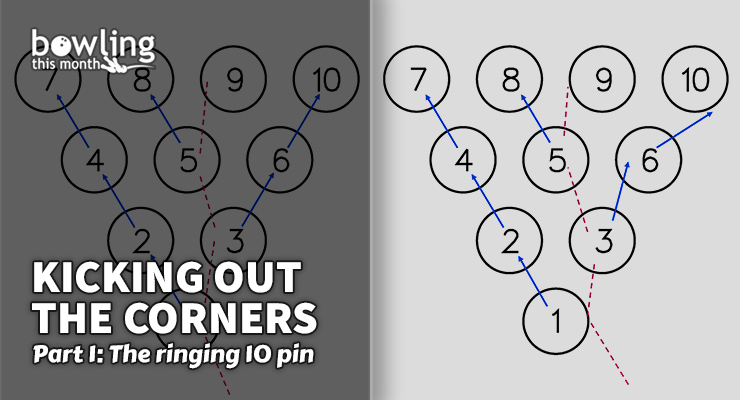Let’s face it: corner pins are the bane of most bowlers’ existence. In fact, this is so true and so prevalent that in nearly every bowling center, at least once a night, a bowler can be heard saying, “Welcome to XYZ!” as if their center has the market cornered on corner pins.
Not to be the bearer of bad news, but when everyone says that about their center, it can’t be true. Yes, some centers are a bit more prone to certain leaves due to their specific characteristics, but once you’ve achieved a level of repeatability and shotmaking so that you are in the pocket more often than not, corner pins—and more specifically, the bowling-side corner pin—are going to be your most frequent leave.
With this in mind, over the next few articles, we’ll cover the different reasons why you leave corner pins and what to do about them. In this article, we’ll talk about the bowling-side corner pin: the 10 pin for righties and the 7 pin for lefties. Specifically, we’ll focus on the ringing 10 pin, which is also commonly known as the solid 10 pin or the wrap 10 pin.
To keep things simpler, I will use righthanded terminology for the most part. For example, discussion of the 6 pin’s action into the 10 pin can simply be mirrored for the 4 pin’s action into the 7 for lefties.
The different kinds of 10 pins
Not all 10 pins are created equal. Sure, they look the same on the scoreboard, and you need to shoot the spare the same way, but there are actually three different kinds of 10 pins that you can leave, each with its own unique signature, and each with ...
This article is only available to Bowling This Month subscribers. Click below to get instant access to this article and all of our other premium instructional content.
Subscribe to Bowling This Month
Already a Bowling This Month subscriber? Click here to log in.
